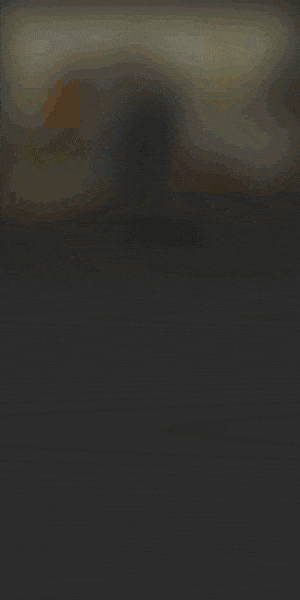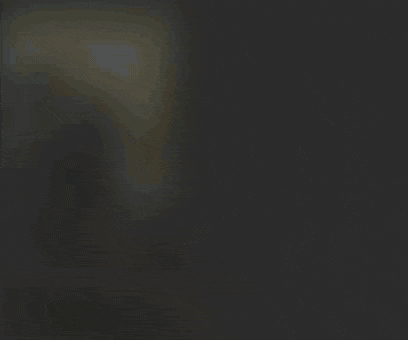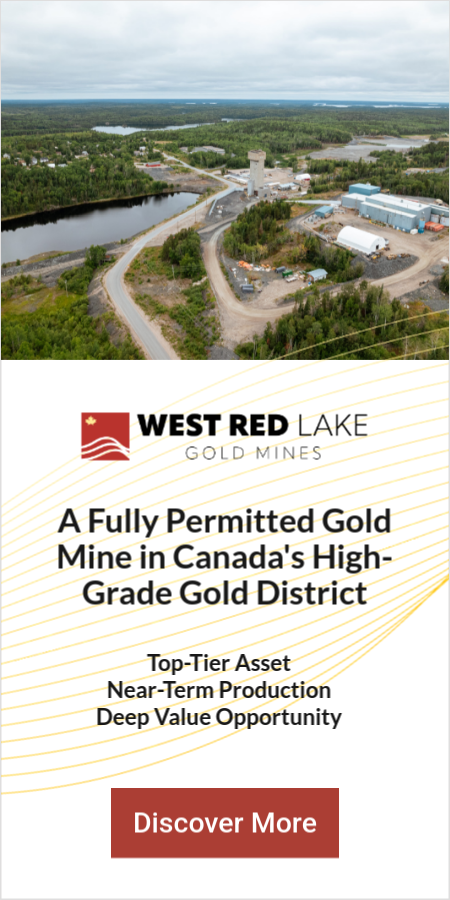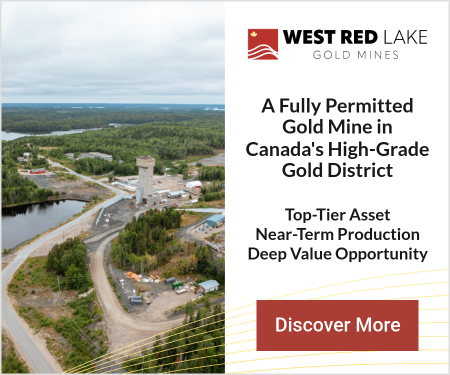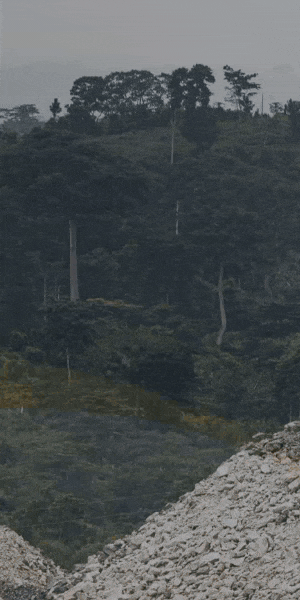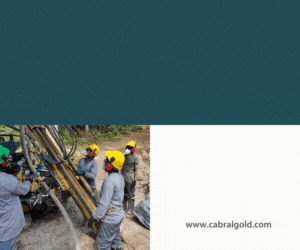DRDGOLD's 18-Year Dividend Streak Continues as Debt-Free Expansion Targets 200,000 Ounces by 2029
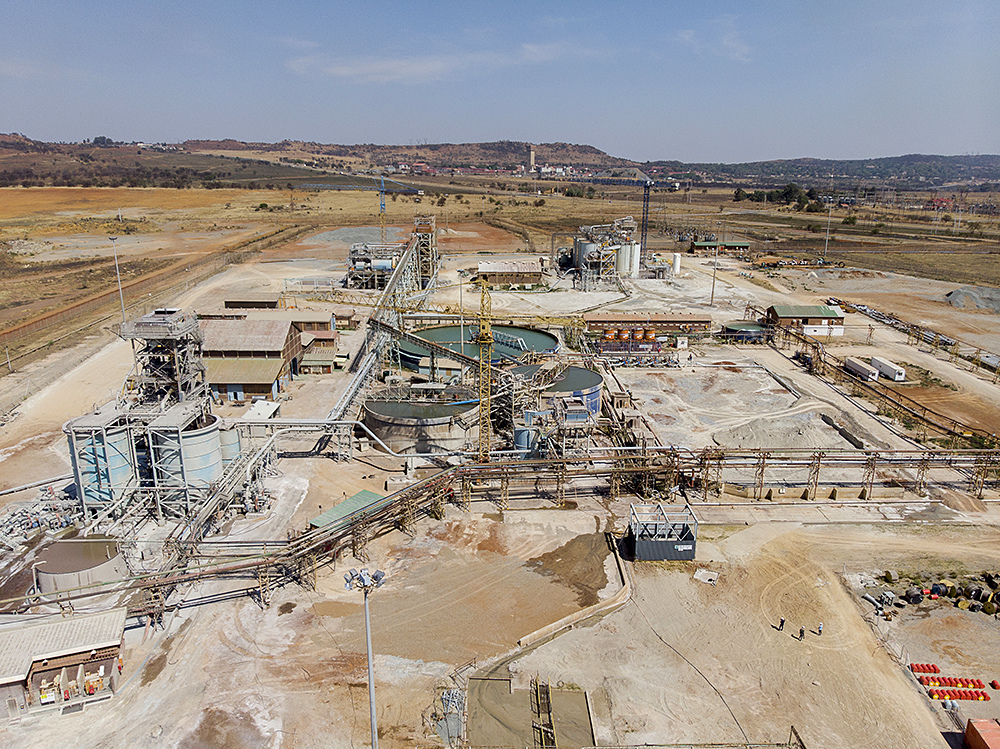
DRDGOLD is expanding gold production to 200,000 oz/year through debt-free infrastructure investment, targeting 18-year dividend record while pursuing mine restoration globally.
- DRDGOLD, a Johannesburg-based gold producer with a market capitalization exceeding $2 billion, has maintained an unbroken 18-year dividend payment record while operating a unique business model that extracts gold from mine tailings, processing 100,000-155,000 ounces annually from two main operations without ever borrowing to fund distributions.
- The company is executing its Vision 2028 capital investment program, investing $100-120 million annually to build infrastructure including an 800-hectare Regional Tailings Storage Facility and the DP2 plant expansion that will increase processing capacity to 3 million tons monthly and production to approximately 200,000 ounces annually, all funded from operating cash flows while maintaining a debt-free balance sheet.
- CEO Niël Pretorius emphasizes that DRDGOLD measures operational efficiency by rand per ton costs rather than dollar per ounce, enabling the company to profitably process lower-grade material across various gold price environments, with strategic renewable energy investments reducing power costs and demonstrating embedded operational resilience.
- The company's infrastructure investments extend mine life beyond 2040 and create strategic advantages for potential regional consolidation of tailings operations, with the capacity to process material from nearby operations and leverage existing deposition and processing facilities without proportional increases in overhead costs.
- DRDGOLD is positioning itself to capture a new revenue stream by partnering with global mining companies to provide environmental restoration services, reprocessing mine tailings and depositing material into exhausted open pits to meet increasingly stringent corporate sustainability standards while potentially generating economic returns that contribute to mine closure costs.
In an industry often characterized by exploration risk, development delays, and operational volatility, DRDGOLD presents an unusual proposition. The Johannesburg-based company, listed on both the JSE and New York Stock Exchange with a market capitalization exceeding $2 billion, has carved out a distinctive niche in the gold sector by extracting value from what others discard. For 18 consecutive years, the company has paid dividends without skipping a single year and without ever borrowing to fund those distributions. This track record speaks to a business model built on resilience rather than speculation.
The Core Business: Efficiency at Scale
DRDGOLD's operations center on processing mine tailings - the waste material left behind from historical gold mining operations. The company currently produces between 100,000 and 155,000 ounces of gold annually from two main operations: Ergo, which began operations in 2008, and Far West Gold. This is not a high-grade mining operation; success depends entirely on processing massive volumes at the lowest possible cost.
In a recent interview, CEO Niël Pretorius provided detailed insights into the company's operations, capital allocation strategy, and long-term vision. Pretorius is emphatic about how the company measures efficiency:
"We don't gauge our efficiency on the basis of dollar per ounce. We gauge our efficiency on the basis of rand per ton. You know, how much it's costing us to process every ton."
This distinction is critical. As head grades decline over time - an inevitable reality when mining tailings - revenue per ton decreases on a flat gold price. The only sustainable path forward is relentless focus on reducing unit costs per ton processed.
This philosophy has driven significant operational improvements. The construction of a solar farm at Ergo now provides approximately half of the operation's power requirements during daylight hours. When combined with battery storage, this renewable energy infrastructure delivers a reduction of 9-15 rand per ton in processing costs, depending on time of day. These are not marginal improvements; they represent fundamental changes to the cost structure that enable the company to profitably process lower-grade material.
Vision 2028: The Capital Investment Program
DRDGOLD is currently in the midst of its most significant capital investment phase, a program the company calls Vision 2028. The initiative encompasses three major projects that will transform the company's production capacity and extend mine life well beyond 2040:
The first component involves extending operations at Ergo, the company's original tailings project. Initially designed with a 12-year mine life when operations began after 2008, management determined that substantial value remained in the resource base as gold prices improved. Rather than closing the operation, DRDGOLD committed to extending its life. This decision required significant new infrastructure: additional deposition space, pipeline routes, reclamation areas, and ultimately a new tailings storage facility at Withok that will support operations into the 2040s.
The second major project is the DP2 plant expansion at Far West. This operation currently processes 500,000 tons per month and the expansion will add a second module doubling capacity to 1.2 millions tons monthly. The project includes construction of a new elution circuit, zinc precipitation facilities, gold recovery systems, and a state-of-the-art smelthouse.
The third critical component is construction of a massive new Regional Tailings Storage Facility (RTSF). This 800-hectare facility will rank among the largest tailings storage facilities in South Africa, if not globally, with ultimate capacity to hold more than 800 million tons of mine residue. The RTSF addresses a looming constraint: the existing deposition facility at Ergo Gold Recoveries will face capacity pressures beginning in 2026.
Collectively, these projects represent capital expenditures of $100-120 million annually, sustained over multiple years. This level of investment is dramatically higher than DRDGOLD's typical sustaining capital requirements, which run at approximately 5% of cash operating costs.
Capital Allocation: Funding Growth Without Debt
The timing of DRDGOLD's capital investment program coincided with a substantial rally in gold prices. When the Vision 2028 initiative was designed, management anticipated operating in a much lower gold price environment and had arranged a debt facility to fund peak capital requirements in 2026. The subsequent gold price rally changed the equation entirely.
"It's back to just under $4,000 an ounce. It's still a very attractive gold price. If you had offered this to us three years ago, without hesitation, we would have said yes, please. Can we can we have that for a while? And this is putting us in a position where we can actually fund these capital expansion projects uh and these future positioning projects."
The elevated prices have enabled DRDGOLD to fund its entire Vision 2028 program from operating cash flows while remaining debt-free and continuing dividend payments. In fact, the company doubled its most recent dividend payment compared to the previous year.
This financial flexibility represents a significant advantage. The company is building long-life infrastructure during a favourable pricing environment without compromising its balance sheet or suspending shareholder returns. Once the major capital projects are completed by the end of 2028 or early 2029, sustaining capital requirements will return to approximately 5% of cash operating costs, dramatically improving free cash flow generation.
Production Targets and Infrastructure Capacity
The Vision 2028 program is designed to establish infrastructure capable of processing 3 million tons of material per month and supporting annual gold production of approximately 200,000 ounces. This represents a significant increase from current production levels of 100,000-155,000 ounces annually.
The infrastructure being built provides substantial optionality. The new RTSF, for example, can accommodate a deposition rate of 2.4 million tons per month once fully constructed, while the initial plant capacity at DP2 will be 1.2 million tons monthly. Pretorius noted that as part of the Sibanye-Stillwater group, DRDGOLD has potential access to other processing plants in the region that may become available over time. Upgrading existing facilities could provide a more capital-efficient path to further expansion than building entirely new plants.
At Ergo, DRDGOLD has already reduced the deposition rate onto the Brackpan facility - an aging tailings dam in operation since 1984 - from 2.1 million tons per month to 1.6 million tons monthly. The goal is to systematically reduce reliance on this facility, ultimately reaching deposition rates of 250,000-300,000 tons monthly before beginning decommissioning over the next three to four years.
The Daggafontein pipeline project, once operational, will enable this transition by providing alternative deposition capacity.
Beyond Optimization: The Consolidation and Restoration Opportunity
While Vision 2028 focuses on optimizing existing operations, Pretorius articulated a longer-term strategic vision that extends DRDGOLD's business model beyond its current operations. This vision encompasses two complementary opportunities: regional consolidation of tailings operations and providing environmental restoration services to other mining companies globally.
The regional consolidation opportunity is relatively straightforward. DRDGOLD's infrastructure investments create strategic advantages within its operating areas. The company could potentially process tailings from nearby operations, leveraging its established deposition capacity, processing facilities, and logistics infrastructure. This would extend operational life and potentially improve capacity utilization without proportional increases in overhead costs.
The environmental restoration opportunity is more innovative and potentially more significant. Pretorius outlined a vision in which DRDGOLD partners with major mining companies approaching the end of mine life to reprocess their tailings and deposit the material into exhausted open pits, dramatically reducing the environmental footprint of historical mining operations.
"What we're seeing more and more corporates wanting to do is actually restore nature and restore ecosystems," Pretorius explained. "And we believe that if we could be a role player and if we could assist and partner with other companies to take their tailings, reprocess it at scale and redeposit it into the pits that they had created, then the evidence that there used to be a mine is very significantly reduced to the point where it could almost be neutral."
DRDGOLD's proposition is that mine tailings contain latent value that can be unlocked through reprocessing and applied toward mine closure costs. Pretorius emphasized that DRDGOLD is already engaging with operators of large open-pit projects approaching maturity worldwide. The company sees this as an opportunity to deploy its technical expertise and business model in new jurisdictions while addressing genuine environmental needs.
Interview with CEO Niël Pretorius
Value Proposition: Optimization Over Speculation
Pretorius was remarkably candid about what DRDGOLD is - and what it is not. The company does not position itself as a dynamic acquirer of distressed assets or a play on commodity price volatility.
"Our value proposition is one of asset optimization," he stated. "So we have a very large asset base. We can process at a particular rate, and our efforts are towards putting in the infrastructure to do that for as long as we possibly can and not leaving any value behind."
This contrasts with other companies in the junior and mid-tier gold space that acquire second- or third-tier assets, apply operational improvements, and generate significant returns during favourable commodity cycles. Those businesses can be highly profitable during upswings but often struggle during downturns because the underlying assets lack embedded resilience.
DRDGOLD's model prioritizes stability and longevity. The company processes lower-grade material that remains economic across a wider range of gold prices because of relentless focus on cost efficiency. This embedded resilience has enabled the company to pay dividends continuously for 18 years, including very small dividends during challenging market conditions, without ever borrowing to fund distributions.
"We go to a different church," Pretorius remarked. "Our church is one of optimization. We have what we have. We'll look after it. We'll have embedded resilience, and we'll leverage what we've established."
The Investment Thesis for DRDGOLD
- Production Growth with Financial Discipline: DRDGOLD is executing a debt-free expansion program targeting production growth from current levels of 100,000-155,000 ounces annually to approximately 200,000 ounces by 2028-2029, with sustaining capital requirements expected to drop to just 5% of cash operating costs upon completion, substantially improving free cash flow generation.
- Proven Track Record of Shareholder Returns: The company has demonstrated exceptional financial resilience by paying dividends for 18 consecutive years without interruption and without ever borrowing to fund distributions, recently doubling dividend payments year-over-year despite ongoing heavy capital investment of $100-120 million annually.
- Infrastructure Provides Long-Term Optionality and Cash Flow Visibility: The company is building substantial infrastructure capacity including an 800-hectare Regional Tailings Storage Facility (RTSF) and expanded processing plants that extend mine life beyond 2040 at both major operations.
- Environmental Restoration: DRDGOLD is positioning itself to capture a potentially significant new revenue stream by partnering with global mining companies to provide environmental restoration services, reprocessing mine tailings and depositing material into exhausted open pits to meet increasingly stringent corporate sustainability standards without diluting shareholder returns.
- Valuation and Risk Profile Favor Long-Term Investors: With a market capitalization exceeding $2 billion, a debt-free balance sheet, and leveraged exposure to gold price movements balanced by operational efficiency that provides downside resilience, DRDGOLD offers an attractive risk-reward profile for investors seeking gold exposure through a disciplined, operationally focused company rather than speculative exploration or acquisition plays.
- Management Quality Demonstrates Strategic Clarity and Alignment: CEO Niël Pretorius and the executive team have articulated a clear strategic vision focused on asset optimization and embedded resilience rather than opportunistic acquisitions, explicitly defining what the company will not pursue and demonstrating alignment with long-term shareholder value creation over short-term speculation.
Macro Thematic Analysis: The Environmental Restoration Imperative in Mining
The mining industry faces an escalating challenge that creates both risks for incumbent operators and opportunities for innovative solution providers. As regulatory standards tighten and stakeholder expectations evolve, mine closure has transformed from a technical exercise into a strategic imperative with significant financial implications. DRDGOLD's positioning at the intersection of gold production and environmental restoration addresses this emerging macro theme.
Historically, mining companies approaching the end of mine life often divested aging assets to smaller operators, effectively transferring environmental liabilities to entities with limited capital and technical capacity. Regulatory agencies worldwide have strengthened closure requirements, environmental activist groups scrutinize corporate performance more intensely, and institutional investors increasingly incorporate environmental considerations into capital allocation decisions.
More significantly, many leading mining companies have adopted self-imposed environmental standards that exceed regulatory minimums. These commitments reflect genuine shifts in corporate culture but create financial challenges. Mine closure to restoration standards rather than mere rehabilitation standards requires substantially more capital than was typically allocated in original project economics. This creates a funding gap that must be addressed without diluting returns to shareholders or diverting cash flows from profitable core operations.
DRDGOLD's proposed solution—reprocessing mine tailings at scale and depositing the material into exhausted open pits—addresses this challenge while potentially generating economic returns or at minimum reducing net closure costs. The technical feasibility has been demonstrated through the company's 18 years of profitable tailings reprocessing operations. The question is whether this model can be deployed at other sites globally as part of comprehensive mine closure programs.
As CEO Niël Pretorius articulated: "What we believe we will be able to then deliver ultimately is that picture, that photograph, that story over time where you could say to your stakeholders, your broader stakeholder base, this is what it used to look like and this is what it looks like now. And to my shareholders, you know what? We didn't dilute your returns. We actually did this by simply just applying something that was there and that never formed part of our value proposition."
For investors, the thematic represents potential upside beyond DRDGOLD's core business of optimizing its existing asset base. The environmental restoration opportunity could evolve into a distinct business line with substantial revenue potential, diversifying the company's growth drivers while aligning with powerful secular trends in corporate environmental responsibility.
TL;DR
DRDGOLD operates a proven, resilient business model extracting gold from mine tailings in South Africa, having paid dividends for 18 consecutive years without interruption or debt. The company is currently executing its Vision 2028 program—a debt-free expansion funded entirely from operating cash flows that will increase production from 100,000-155,000 ounces to 200,000 ounces annually by 2028-2029. Key projects include constructing an 800-hectare Regional Tailings Storage Facility, doubling DP2 plant capacity to 1.2 million tons monthly, and building infrastructure that extends mine life beyond 2040. Management's relentless focus on rand per ton efficiency rather than dollar per ounce metrics, combined with strategic renewable energy investments reducing power costs by 9-15 rand per ton, enables profitable processing of lower-grade material across commodity cycles.
Beyond current operations, DRDGOLD is positioning itself for regional consolidation opportunities and potentially significant new revenue from environmental restoration services—partnering with global mining companies to reprocess tailings and deposit material into exhausted open pits, addressing the industry's escalating mine closure challenge. With a market cap exceeding $2 billion, debt-free balance sheet, and management explicitly focused on asset optimization over speculation, DRDGOLD offers investors gold exposure through operational discipline and embedded resilience rather than exploration risk or acquisition-driven growth.
Frequently Asked Questions (FAQs) AI-Generated
Analyst's Notes




Subscribe to Our Channel
Stay Informed
















